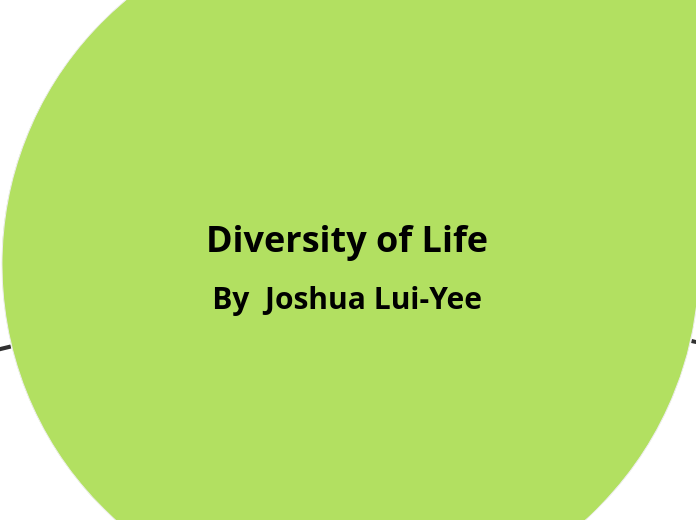causing
that
Real-Life Examples (Hardy Weinberg Equilibrium):
4. Natural Selection: Giraffes have longer necks that allow them to find food and resources that other animals may struggle to find for survival. This is a physical advantage over other animals.
3. Non-Random Mating: Most human cultures do not mate randomly and instead find mates based on traits or characteristics.
2. Genetic Drift: Natural disasters can occur, causing a population of organism to be wiped out. Some alleles in the gene pool will survive over others.
1. Gene flow: Bees can carry pollen from one plant to another, increasing gene flow, because pollen can produce male gametes.
to cause
reminds us that
by finding the
through the use of
we can see this in the
and also
this causes
so that
reminds us that
and so
because
will only have
stats that in
this will
so that the
and the
when the
comes after
to create
is seen through
which will
this results in
during
through
this will
resulting in the creation of
this is seen through the
where
this will NOT
to create
which is a
which is to
this ultimately
that ultimately
and results in the
but when
this is when
can be seen through
includes
which in turn
the offspring recieve
and through
they are
and the result are
they form
are
CONNECTION: Genes are a part of gene pools, but are changed by gene flow and genetic drift in the Hardy-Weinberg Equilibrium
is the
CONNECTION: Sexual reproduction is important to genetic variation between alleles mutations, but also to maintain the Hardy-Weinberg equilibrium
CONNECTIONS: Genotypes are part of Punnett squares in Genetics but are also part of natural selection in Evolution
CONNECTION: Independent assortment is a process in meiosis, but is also a part of Mendel's Laws.
CONNECTION:
Both meiosis and gametogenesis are involved in the production of gametes
CONNECTION: Mendel's Laws of Genetics explain genetic differences, but uses Meiosis to describe how genetic variation occurs in alleles
CONNECTION: Alleles are mutated genes, but are also exchanged during meiosis, and help to increase genetic variation
CONNECTION: Organisms can have traits that follow Mendel's Laws (dominant and recessive traits), or traits that are incomplete patterns. Both increase genetic variation via allele combinations.
includes
allowing for more
which changes the
and
which results in a
CONNECTION: Organisms can have traits that follow Mendel's Laws, or traits that are incomplete patterns. Both increase genetic variation.
which can result in
will result in a
meaning that they will have the
giving organisms a
when there are
or
to be
will result in the
and
means to have
which means that
that can
but must be a
are defined as
when offspring recieve
is important because
which is the
of everyone in a
in the
CONNECTION: Alleles are involved in Genetics, to contribute to mutations, but are also part of Evolution to describe gene pools.
Diversity of Life
By Joshua Lui-Yee
Genetics:
Cell Cycle
Meiosis
create gamete cells
daughter cells recieve allele from each parent
2 phases of meiosis
Meiosis 2:
4 haploid cells
genetically different offspring
increase diversity
Meiosis 1 (reduction division phase)
2 haploid cells
Increase genetic variation
independent assortment
prophase 1
crossing-over
metaphase 1
Note: Meiosis and mitosis both have PMAT phases, with slight differences
Subtopic
Interphase:
Mitosis
cell division process
genetically identical diploid somatic cells
increase genetic variation
Non-Mendelian Patterns of Inheritance:
Complete Dominanace:
both alleles are dominant
both alleles are expressed separately
Incomplete Dominance
neither allele is dominant
both alleles are expressed together
creation of a new trait
increases phenotypical diversity
Mendel Laws of Genetics:
Mendal's Law of Independant Assortment
alleles assort of each other during metaphase 1
monohybrid Punnett squares
Mendal's Law of Segregation
alleles segregate during anaphase
each gamete gets 1 allele
increased variation in traits
increased diversity in offspring
probability of alleles
dihybrid Punnett squares
genotypes and phenotypes of each allele
Mendel's Law of Dominance
a heterozygous organism
1 expressed allele
alleles must be recessive or dominanat
dominant alleles will be revealed over recessive
Reproduction
Sexual Reproduction:
Gamete formation
Sperm and egg unite
Embryo forms
offspring recieves alleles from each parent
increases genetic variation
Gametogenisis
Spermatogenisis
sperm cells
Oogenisis
egg cells (ovem
Alleles
Mutated genes (ie. green eyes vs blue eyes)
after meiosis
cells with the same genes and locus, but varying alleles
genetically different
sexual reproduction
alleles from each parent
increases diversity of traits and characteristics
Evolution
Natural Selection:
change in allele frequencies
specific genotype advantages
a survival advantage
larger gene pool
selection
different rates of surival
struggle for existence
overproduction of offspring
variation of traits among organisms
Hardy-Weinberg Equilibrium:
a population can follow conditions
not in accordance with the theory
changing allele population
genetic diversity
gene pool
diverse offspring
non-random mating
genetic drift
gene flow
mutation
natural selection
in accordance with the theory
same allele population
no genetic diversity
no diverse offspring
same gene pool
random sexual mating
large population size
isolation from other species
no mutation
no natural selection
Populations Genetics and Evolution:
Microevolution:
change in alleles over time
genetic diversity increases
different characteristics and alleles
A gene pool
alleles
genes
population
Populations
units of evolution
genetically evolve
group of organisms
interbreed in the same region

